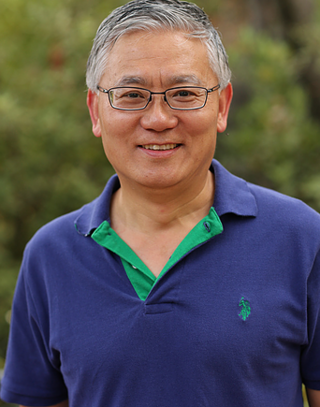Persuasive technology is broadly defined as technology that is designed to change attitudes or behaviors of the users through persuasion and social influence, but not necessarily through coercion. Such technologies are regularly used in sales, diplomacy, politics, religion, military training, public health, and management, and may potentially be used in any area of human-human or human-computer interaction. Most self-identified persuasive technology research focuses on interactive, computational technologies, including desktop computers, Internet services, video games, and mobile devices, but this incorporates and builds on the results, theories, and methods of experimental psychology, rhetoric, and human-computer interaction. The design of persuasive technologies can be seen as a particular case of design with intent.
Personal information management (PIM) is the study and implementation of the activities that people perform in order to acquire or create, store, organize, maintain, retrieve, and use informational items such as documents, web pages, and email messages for everyday use to complete tasks and fulfill a person's various roles ; it is information management with intrapersonal scope. Personal knowledge management is by some definitions a subdomain.

In human–computer interaction, WIMP stands for "windows, icons, menus, pointer", denoting a style of interaction using these elements of the user interface. Other expansions are sometimes used, such as substituting "mouse" and "mice" for menus, or "pull-down menu" and "pointing" for pointer.

Ben Shneiderman is an American computer scientist, a Distinguished University Professor in the University of Maryland Department of Computer Science, which is part of the University of Maryland College of Computer, Mathematical, and Natural Sciences at the University of Maryland, College Park, and the founding director (1983-2000) of the University of Maryland Human-Computer Interaction Lab. He conducted fundamental research in the field of human–computer interaction, developing new ideas, methods, and tools such as the direct manipulation interface, and his eight rules of design.
Value sensitive design (VSD) is a theoretically grounded approach to the design of technology that accounts for human values in a principled and comprehensive manner. VSD originated within the field of information systems design and human-computer interaction to address design issues within the fields by emphasizing the ethical values of direct and indirect stakeholders. It was developed by Batya Friedman and Peter Kahn at the University of Washington starting in the late 1980s and early 1990s. Later, in 2019, Batya Friedman and David Hendry wrote a book on this topic called "Value Sensitive Design: Shaping Technology with Moral Imagination". Value Sensitive Design takes human values into account in a well-defined matter throughout the whole process. Designs are developed using an investigation consisting of three phases: conceptual, empirical and technological. These investigations are intended to be iterative, allowing the designer to modify the design continuously.
Animal–computer interaction (ACI) is a field of research for the design and use of technology with, for and by animals covering different kinds of animals from wildlife, zoo and domesticated animals in different roles. It emerged from, and was heavily influenced by, the discipline of Human–computer interaction (HCI). As the field expanded, it has become increasingly multi-disciplinary, incorporating techniques and research from disciplines such as artificial intelligence (AI), requirements engineering (RE), and veterinary science.
Feminist HCI is a subfield of human-computer interaction (HCI) that applies feminist theory, critical theory and philosophy to social topics in HCI, including scientific objectivity, ethical values, data collection, data interpretation, reflexivity, and unintended consequences of HCI software. The term was originally used in 2010 by Shaowen Bardzell, and although the concept and original publication are widely cited, as of 2020 Bardzell's proposed frameworks have been rarely used since.

Jacob O. Wobbrock is a Professor in the University of Washington Information School and, by courtesy, in the Paul G. Allen School of Computer Science & Engineering at the University of Washington. He is Director of the ACE Lab, Associate Director and founding Co-Director Emeritus of the CREATE research center, and a founding member of the DUB Group and the MHCI+D degree program.

Wendy Elizabeth Mackay is a Canadian researcher specializing in human-computer interaction. She has served in all of the roles on the SIGCHI committee, including Chair. She is a member of the CHI Academy and a recipient of a European Research Council Advanced grant. She has been a visiting professor in Stanford University between 2010 and 2012, and received the ACM SIGCHI Lifetime Service Award in 2014.
Susanne Bødker is a Danish computer scientist known for her contributions to human–computer interaction, computer-supported cooperative work, and participatory design, including the introduction of activity theory to human–computer interaction. She is a professor of computer science at Aarhus University, and a member of the CHI Academy.

Shumin Zhai is a Chinese-born American Canadian Human–computer interaction (HCI) research scientist and inventor. He is known for his research specifically on input devices and interaction methods, swipe-gesture-based touchscreen keyboards, eye-tracking interfaces, and models of human performance in human-computer interaction. His studies have contributed to both foundational models and understandings of HCI and practical user interface designs and flagship products. He previously worked at IBM where he invented the ShapeWriter text entry method for smartphones, which is a predecessor to the modern Swype keyboard. Dr. Zhai's publications have won the ACM UIST Lasting Impact Award and the IEEE Computer Society Best Paper Award, among others, and he is most known for his research specifically on input devices and interaction methods, swipe-gesture-based touchscreen keyboards, eye-tracking interfaces, and models of human performance in human-computer interaction. Dr. Zhai is currently a Principal Scientist at Google where he leads and directs research, design, and development of human-device input methods and haptics systems.

Lauren G. Wilcox is an American professor and researcher in responsible AI, human–computer interaction, and health informatics, known for research on enabling community participation in technology design and development and her prior contributions to health informatics systems.

Elizabeth "Betsy" DiSalvo is an American professor and Interim Chair at the Georgia Institute of Technology School of Interactive Computing. She is known for her research on informal learning, the impact of cultural values on technology use and production, computer science education, and the learning sciences.

Honghao Deng (zh:邓鸿浩) is a Chinese computational designer and entrepreneur who resides in San Francisco. He earned a Master of Design Technology with Distinction at Harvard University. He is founder and CEO of Butlr and formerly was a researcher at City Science Group, MIT Media Lab. His latest project with Jiani Zeng Illusory Material: 3D Printed Optical Textiles was selected "The best experimental design project of 2020" by Fast Company and won the 2020 Red Dot: Best of the Best, selected from 4170 entries from 52 countries.
Batya Friedman is an American professor in the University of Washington Information School. She is also an adjunct professor in the Paul G. Allen School Computer Science and Engineering and adjunct professor in the Department of Human-Centered Design and Engineering, where she directs the Value Sensitive Design Research Lab. She received her PhD in learning sciences from the University of California, Berkeley School of Education in 1988, and has an undergraduate degree from Berkeley in computer science and mathematics.

Hanna Wallach is a computational social scientist and partner research manager at Microsoft Research. Her work makes use of machine learning models to study the dynamics of social processes. Her current research focuses on issues of fairness, accountability, transparency, and ethics as they relate to AI and machine learning.
Jofish Kaye is an American and British scientist specializing in human-computer interaction and artificial intelligence. He runs interaction design and user research at anthem.ai, and is an editor of Personal & Ubiquitous Computing.
Human-AI collaboration is the study of how humans and artificial intelligence (AI) agents work together to accomplish a shared goal. AI systems can aid humans in everything from decision making tasks to art creation. Examples of collaboration include medical decision making aids., hate speech detection, and music generation. As AI systems are able to tackle more complex tasks, studies are exploring how different models and explanation techniques can improve human-AI collaboration.
Lilly Christine Irani is an American academic whose research spans topics in computer science, communication studies, feminist studies, entrepreneurship, and microwork. She is an associate professor in the Department of Communication at the University of California, San Diego.
Whatjobs is an international job search platform, that operates in 39 countries. It was originally founded in 2014 as AdView.








